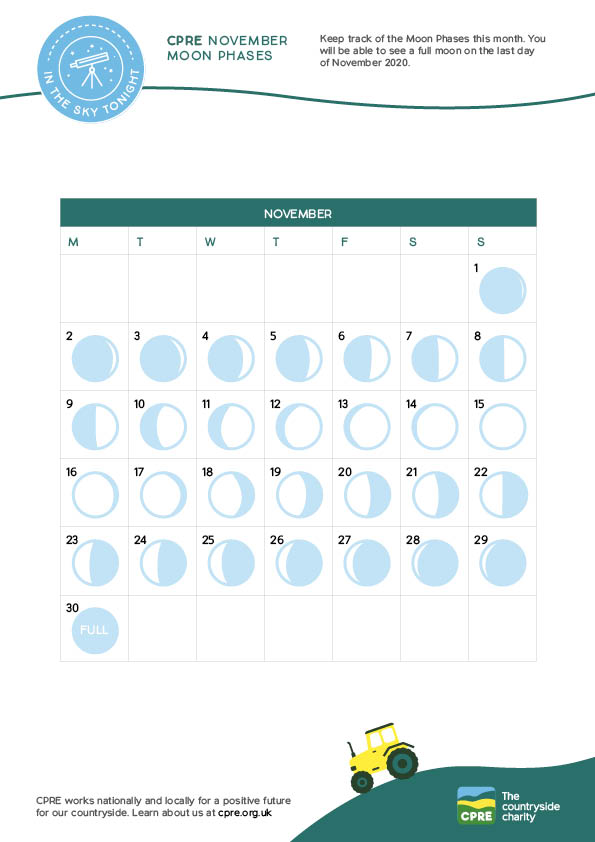Phases of the Moon: October and November
If you look up at the sky on a clear night, you will see the moon in one of its phases, sitting approximately 240,000 miles from earth. The moon that we see is the fifth largest in the solar system, and has the important role of helping to stabilise earth’s “wobble” on its axis, which in turn helps to stablise our climate.
We didn’t know that other moons existed until 1610, when Galileo discovered four moons around Jupiter. This is why our moon is simply known as “The Moon”. The causes tides, which shape and form our land and coastlines, and it is so in sync with the rotation of the earth that we only ever see one side of it.
As the moon rotates around the earth, it appears to change shape as a portion of it is lit up by reflecting the sun. A “lunar month” is the time it takes for the moon to go through all of its eight phases, which takes 29.5 days. It is interesting to note that the Northern and Southern hemispheres will offer reflected views of the same moon ‘shape’ because of the position on earth relative to the moon.
Here are the eight phases of the moon, as viewed from each hemisphere:
If you are keen to follow the moon phases for October and November, we have put together a couple of handy print-outs to stick on your fridge, so that you can track which part of the lunar cycle we are in.
If you would like to be more environmentally-friendly, please just download and save.








